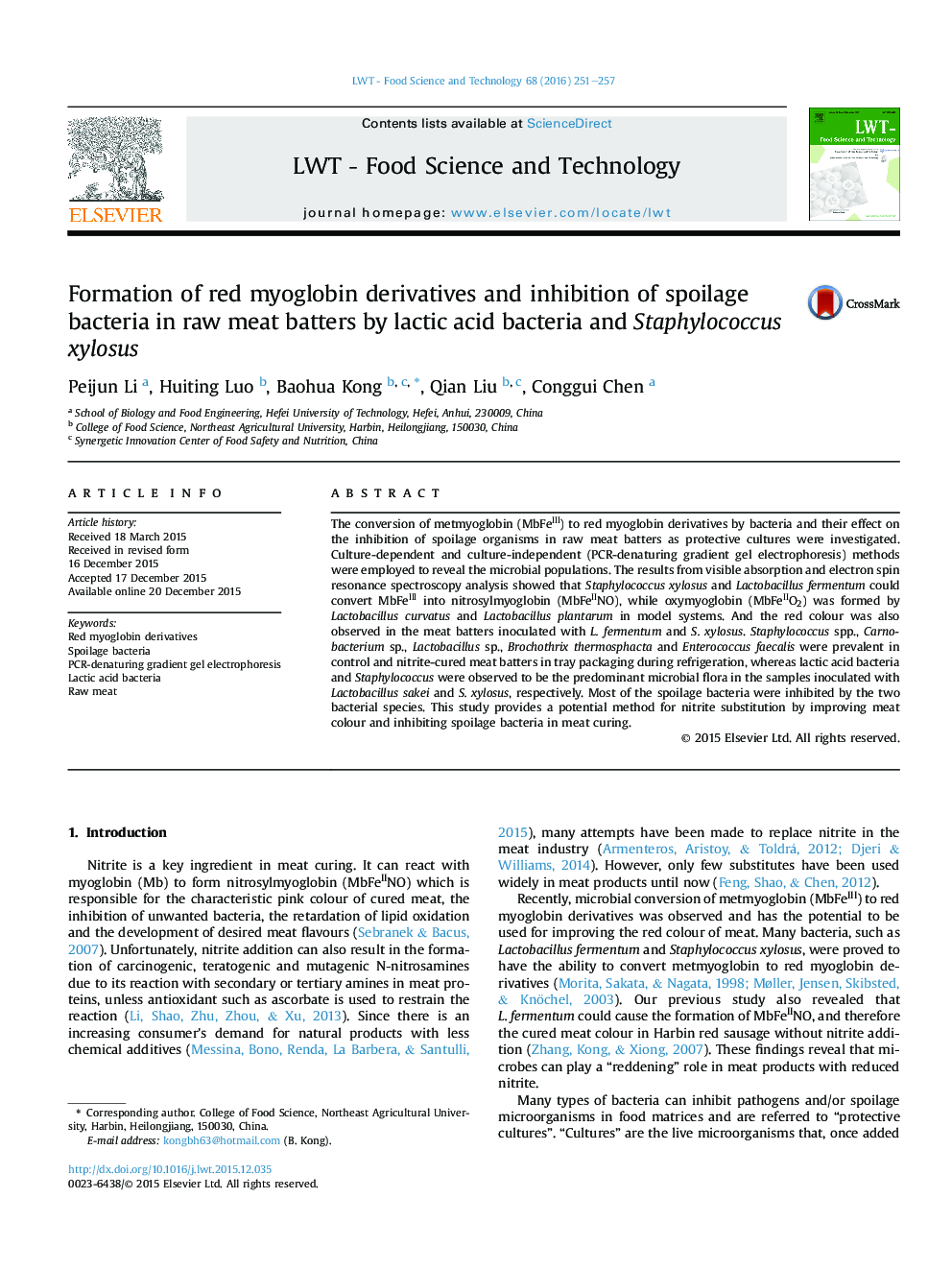| Article ID | Journal | Published Year | Pages | File Type |
|---|---|---|---|---|
| 4563643 | LWT - Food Science and Technology | 2016 | 7 Pages |
•Some bacteria converted metmyoglobin into red myoglobin derivatives.•PCR-DGGE method was used to reveal the microbial populations.•Most of the spoilage bacteria were inhibited by specific LAB and S. xylosus.•It provides a potential method for the colour formation and bacteriostasis of meat.
The conversion of metmyoglobin (MbFeIII) to red myoglobin derivatives by bacteria and their effect on the inhibition of spoilage organisms in raw meat batters as protective cultures were investigated. Culture-dependent and culture-independent (PCR-denaturing gradient gel electrophoresis) methods were employed to reveal the microbial populations. The results from visible absorption and electron spin resonance spectroscopy analysis showed that Staphylococcus xylosus and Lactobacillus fermentum could convert MbFeIII into nitrosylmyoglobin (MbFeIINO), while oxymyoglobin (MbFeIIO2) was formed by Lactobacillus curvatus and Lactobacillus plantarum in model systems. And the red colour was also observed in the meat batters inoculated with L. fermentum and S. xylosus. Staphylococcus spp., Carnobacterium sp., Lactobacillus sp., Brochothrix thermosphacta and Enterococcus faecalis were prevalent in control and nitrite-cured meat batters in tray packaging during refrigeration, whereas lactic acid bacteria and Staphylococcus were observed to be the predominant microbial flora in the samples inoculated with Lactobacillus sakei and S. xylosus, respectively. Most of the spoilage bacteria were inhibited by the two bacterial species. This study provides a potential method for nitrite substitution by improving meat colour and inhibiting spoilage bacteria in meat curing.
